index
Presentation
Epipremnum aureum, better known as pothos or boa, is a popular indoor plant due to its resistance and beauty. Originally from the Pacific Islands, this plant with its lush foliage is appreciated not only for its easy maintenance but also for the touch of sophistication it adds to any environment. If you’re an indoor plant enthusiast or are looking for a vibrant addition to your space, Epipremnum aureum could be the perfect choice.
Meaning of Epipremnum aureum
Epipremnum aureum is often associated with prosperity, good luck, and purifying the air. Its bright green foliage and unique patterns represent vitality and continuous growth, making it a popular choice for gifts and decoration in homes and offices. In addition to its aesthetic beauty, this plant is known for filtering pollutants from the air, contributing to a healthier environment. By growing Epipremnum aureum, you not only add a touch of elegance to your home but also invite a sense of renewal and prosperity.
| Item | Epipremnum aureum |
|---|---|
| Common Name | Golden Pothos |
| Botanical Name | Epipremnum aureum |
| Family Araceae | Araceae |
| Plant Type | Indoor plant |
| Adult Size | Varies, usually medium |
| Sun exposure | Partial shade to diffused light |
| Soil Type | Well-drained soil |
| soil pH | 6.1 to 6.5 (slightly acidic to neutral) |
| Flowering time | It rarely blooms indoors |
| Flower colour | White or green, inconspicuous |
| Native Area | Pacific Islands |
| Toxicity | Toxic to pets if ingested |
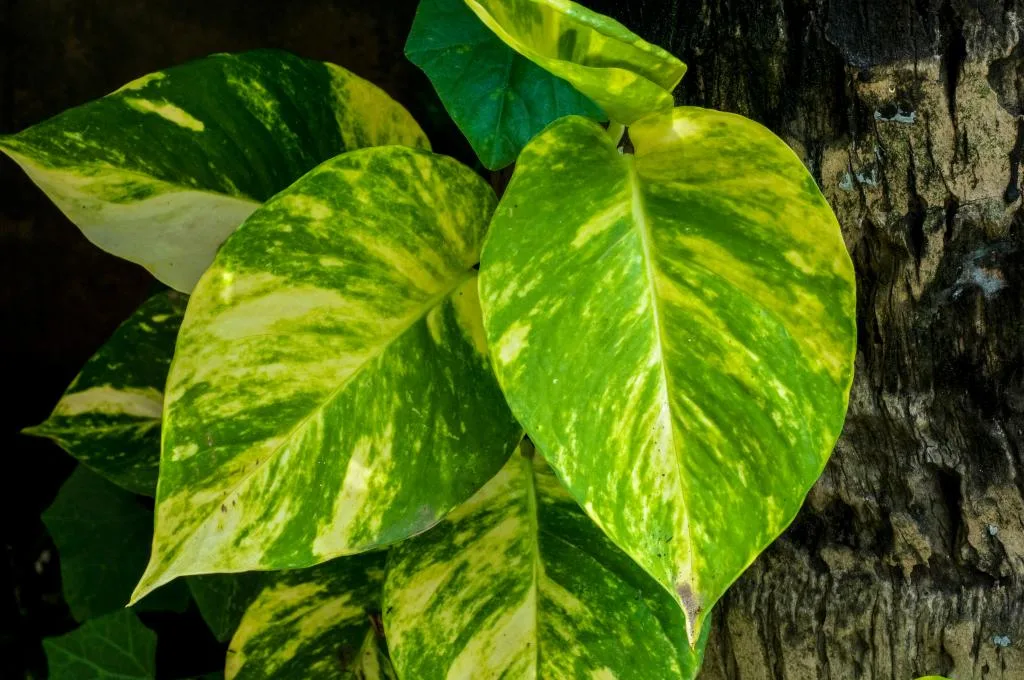
How to Care for Epipremnum aureum
Adequate light
When caring for Epipremnum aureum, it is essential to provide the right amount of light. This plant is versatile and can thrive in conditions ranging from partial shade to diffused light. Avoid direct exposure to intense sunlight, as this can result in damage to the leaves. Find a balance by placing it in a spot with bright indirect light to ensure its healthy development.
Well-drained soil
The choice of soil is crucial to the successful cultivation of Epipremnum aureum. Opt for well-drained soil that allows water to pass through properly. This helps prevent excessive moisture from accumulating in the roots, preventing problems such as root rot. A good-quality, light, and loose potting mix is ideal for maintaining the plant’s health.
Conscientious watering
Water management is essential for the effective care of Epipremnum aureum. Allow the soil to dry out slightly between waterings, avoiding both over- and under-watering. When watering, make sure that the water reaches the roots evenly. Reduce the frequency of watering during the winter months, when the plant’s growth slows down.
Suitable temperature and humidity
This plant is adaptable to a wide range of temperatures but thrives in domestic environments with medium to warm temperatures. Avoid prolonged exposure to temperatures below 10°C. As for humidity, Epipremnum aureum tolerates moderate conditions but benefits from higher relative humidity. If the environment is too dry, consider methods such as placing a tray of water next to the plant.
Moderate fertilisation
Proper fertilisation contributes to the healthy growth of Epipremnum aureum. Use a balanced fertiliser specifically for indoor plants during spring and summer, when the plant is in its active growth period. Avoid excesses, as the accumulation of nutrients can jeopardise the plant’s health.
By following these care guidelines, you’ll be well on your way to enjoying the lasting beauty of Epipremnum aureum in your space.
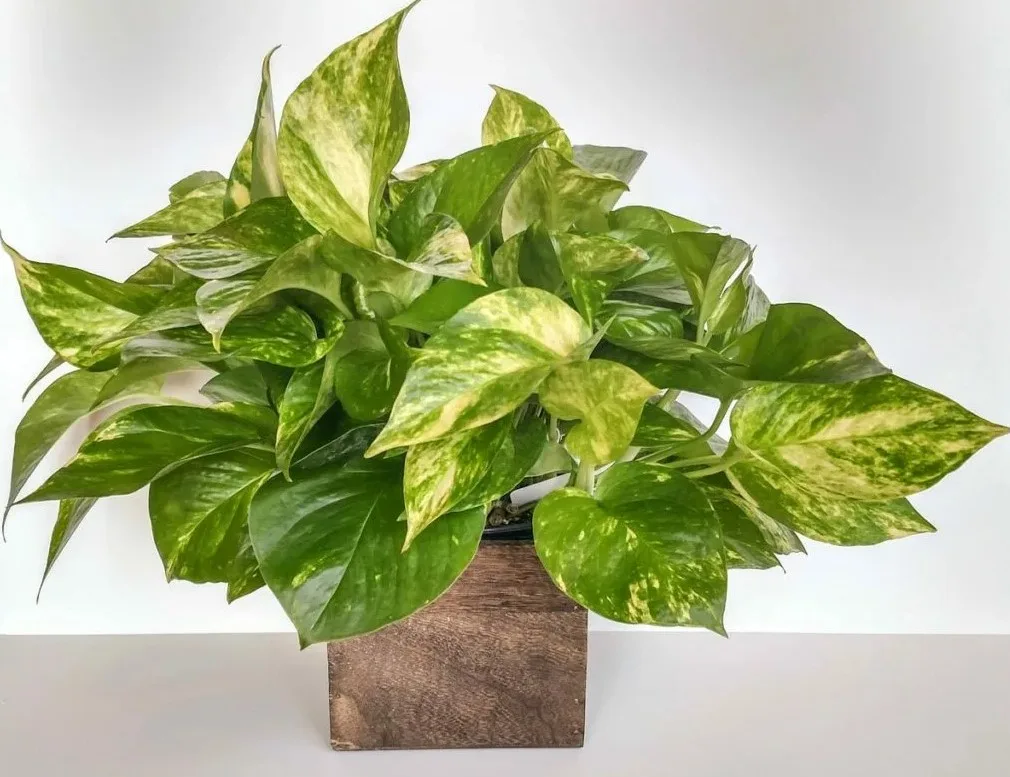
Propagating and planting Epipremnum aureum
How to make Epipremnum aureumcuttings
Propagating Epipremnum aureum is a rewarding way to expand your plant collection. Follow these simple steps to create healthy cuttings:
1. Choice of Container:
- Opt for small containers with adequate drainage.
- Make sure that each container has at least one node from the mother plant.
2. Soil Preparation:
- Use a light, well-drained potting mix.
- Add perlite or vermiculite to improve soil aeration.
3. Cutting and Planting:
- Make cuttings on the healthy part of the vine, ensuring that each cutting has at least one node.
- Plant the cuttings in the prepared soil, burying the node and leaving the leaves above ground.
4. Watering and mulching:
- Water gently to establish the cuttings.
- Cover the containers with transparent plastic to create a humid environment.
5. Initial care:
- Keep the cuttings in a place with bright, indirect light.
- Remove the plastic after rooting and transfer it to larger pots as necessary.
How to plant Epipremnum aureum
Proper planting of Epipremnum aureum is crucial to ensuring healthy, long-lasting development. Follow these guidelines:
1. Choosing a pot:
- Opt for a pot with drainage holes to prevent water accumulation.
- Make sure the size of the pot is appropriate for the size of the plant.
2. Soil Preparation:
- Use a light, well-aerated potting mix.
- Add organic compost to enrich the soil.
3. Plant Positioning:
- Plant the Epipremnum aureum in the centre of the pot, ensuring that the root crown is at soil level.
4. Initial watering:
- Water the plant immediately after planting to establish the roots.
- Avoid waterlogging, and allow the soil to dry out between subsequent waterings.
5. Ongoing Maintenance:
- Keep the plant in an area with bright indirect light.
- Fertilize moderately during the months of active growth.
By following these instructions for making seedlings and planting, you’ll be well on your way to growing a vibrant and thriving Epipremnum aureum in your garden or indoor space.
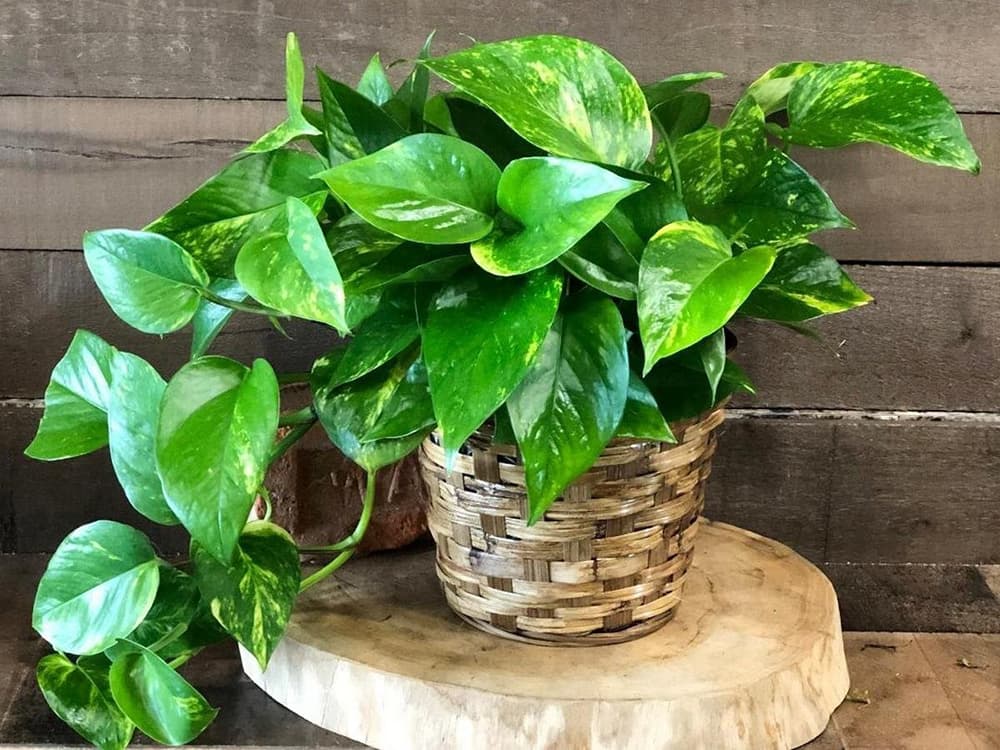
Epipremnum aureum pests and diseases
most common pests and diseases in list form
- Mealybugs (Coccoidea):
- Identification: small insects that lodge in the leaves, sucking out the sap.
- Solution: Wipe off the mealybugs with a damp cloth and, if necessary, use a mild insecticide.
- Mites (rustic mites):
- Identification: small yellowish dots on the leaves and fine webs.
- Solution: Increase humidity around the plant and use neem oil for control.
- Sooty mould:
- Identification: growth of a dark fungus on the leaves.
- Solution: Treat the underlying cause, usually honeydew-producing insects, and clean the leaves.
- Root rot:
- Identification: sudden wilting, yellowing, and rotting of the roots.
- Solution: Reduce watering, replant in well-drained soil, and cut off affected roots.
Common Problems and Their Solutions
1. Yellowing of the leaves:
- Cause: Overwatering.
- Solution: Allow the soil to dry out before watering again and adjust the frequency.
2. Withered Leaves:
- Cause: Lack of water.
- Solution: Increase watering and monitor soil moisture regularly.
3. Dry leaf tips:
- Cause: low humidity.
- Solution: Increase humidity around the plant or use water trays.
4. Yellow or pale leaves:
- Cause: Lack of nutrients.
- Solution: Fertilize moderately during the active growing season.
5. Leaf discoloration:
- Cause: Exposure to intense direct sunlight.
- Solution: Move the plant to a location with bright indirect light.
By identifying and treating common pests and problems promptly, you will ensure the continued health of your Epipremnum aureum and enjoy its beautiful leaves for a long time to come.
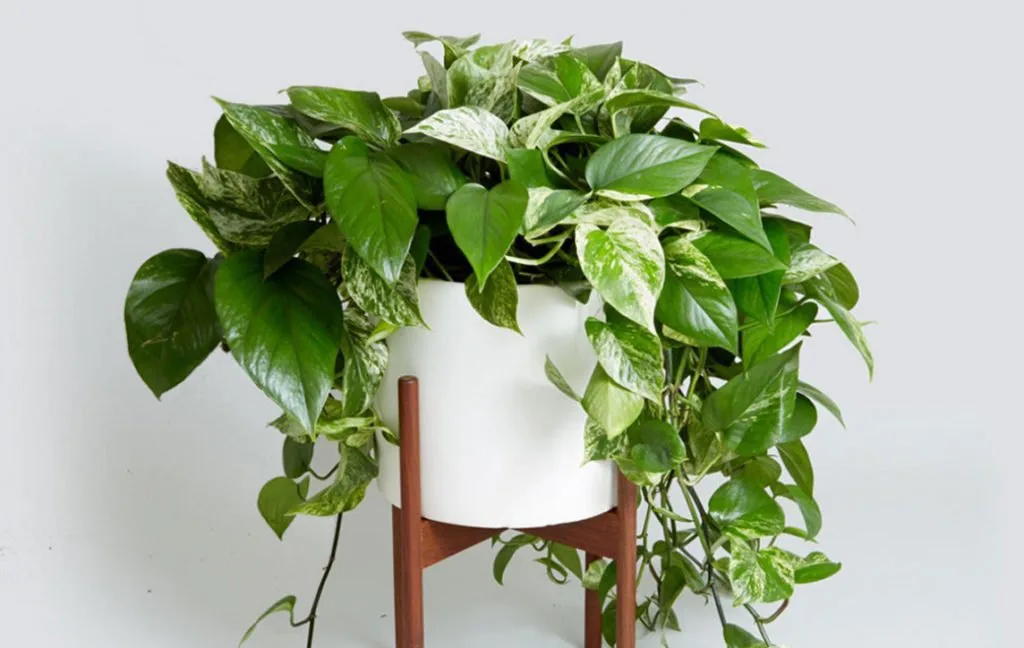
Curiosities and myths about Epipremnum aureum
Fascinating Curiosities
- Air purification:
- Epipremnum aureum is known for its ability to purify the air, removing common pollutants such as formaldehyde and benzene. Having this plant at home not only adds beauty, but also contributes to a healthier environment.
- Versatility in Water:
- As well as thriving in varied light conditions, Epipremnum aureum is very adaptable to watering practices. Its resistance allows it to survive short periods of drought, making it a robust choice for many plant carers.
- Growing in Water:
- Surprisingly, Epipremnum aureum can grow in containers of water. Placing its stems in water will not only result in the development of roots but will also add a decorative touch to your space.
Myths Debunked
- Invincible plant:
- Although it is hardy, Epipremnum aureum is not invulnerable. Proper care is essential, and it’s important to monitor for signs of pests, diseases, and other problems to ensure the plant’s continued health.
- Uncontrolled growth:
- While Epipremnum aureum has vigorous growth, the idea that it will grow uncontrollably and take over space is not entirely accurate. Proper pruning and containment practices help maintain its desired size.
- All variables are equal.
- There are several varieties of Epipremnum aureum, and they can differ in leaf patterns, colors, and sizes. Not all varieties are the same, so explore and discover the diversity this plant can offer.
By uncovering these curiosities and myths about Epipremnum aureum, you’ll gain a deeper understanding of this fascinating plant and learn how to care for it effectively.
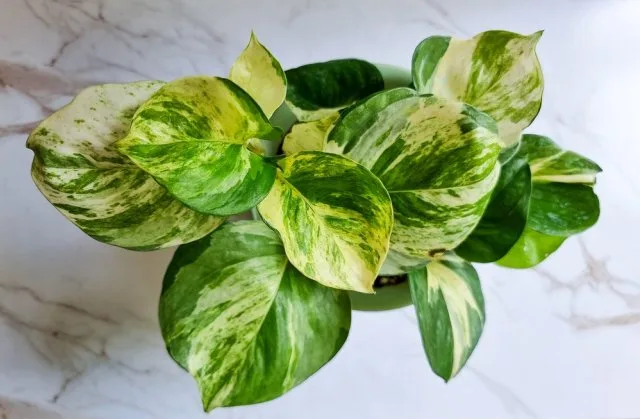
Conclusion
As we explore the fascinating world of Epipremnum aureum, also known as pothos or boa, we discover a truly versatile and enchanting plant. From its remarkable resilience to its ability to purify the air, Epipremnum aureum is more than just an aesthetic addition to our environment; it’s a household companion that thrives in a variety of settings.
To recap, we learned the importance of providing the right amount of light, well-drained soil, and conscious watering care. We confront common myths, emphasising the need for constant attention and care. Proper propagation and planting have opened doors to expanding our plant collections, while identifying and treating pests and diseases ensures the continued health of Epipremnum aureum. In short, by following these guidelines, we can cultivate not just a plant but a story of success and beauty in our homes. Let Epipremnum aureum flourish, providing not just a touch of green but a living expression of care and connection with nature.
Frequently Asked Questions
What is the name of the golden pothos?
The Golden Pothos is not a specific species, but many people refer to Epipremnum aureum, known as pothos or jiboia, because of its resemblance to the plant known as the boa, even though it is not white.
What is the golden pothos used for?
The Golden Pothos, or Epipremnum aureum, is prized for its ability to purify the air by removing substances such as formaldehyde and benzene. In addition, its cultivation is popular for interior decoration due to its lush and varied leaves, contributing to an aesthetically pleasing and healthy environment.
What is the Epipremnum aureum plant used for?
Epipremnum aureum, commonly known as the boa constrictor, serves as a decorative and functional plant. In addition to its ornamental beauty, the plant is recognized for its ability to improve air quality by absorbing pollutants. Its cultivation is appreciated by both plant enthusiasts and those looking for a green and healthy touch in their indoor spaces.







